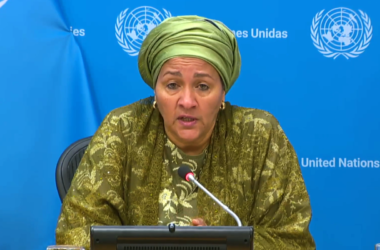In a world where millions go hungry, food waste remains a critical global issue. Fortunately, innovative food rescue programs are emerging as a powerful force to combat both problems simultaneously. These programs not only divert surplus food from landfills but also ensure it reaches those in need, making a significant impact on food security and environmental sustainability.
The Food Waste Challenge:
Food waste is a deeply troubling global problem. Every year, an estimated one-third of all food produced worldwide—equivalent to 1.3 billion tons—goes to waste. This wastefulness has dire consequences for the environment, contributing to greenhouse gas emissions, and exacerbating food insecurity.
The Role of Food Rescue Programs:
Food rescue programs are at the forefront of addressing the food waste crisis and alleviating hunger. Their mission is to:
- Prevent Food Waste: Food rescue programs intercept surplus, edible food that would otherwise be discarded by businesses, farms, restaurants, and individuals.
- Redistribute Food: The rescued food is redistributed to organizations, such as food banks, shelters, and community centers, which serve people facing food insecurity.
- Raise Awareness: Food rescue initiatives raise awareness about food waste’s environmental and social impacts and advocate for sustainable practices.
Innovative Approaches:
Food rescue programs employ innovative approaches to maximize their impact:
- Technology: Mobile apps and online platforms connect food donors with recipients, facilitating real-time food rescue and reducing logistical barriers.
- Collaboration: Partnerships between food businesses, nonprofits, and government agencies create a coordinated and efficient food rescue ecosystem.
- Education: Many programs offer educational initiatives to inform communities about food waste and hunger, promoting behavioral change.
- Surplus Management: Some programs work with food producers to better forecast and manage surplus, reducing waste at its source.
Impact on Hunger and the Environment:
Food rescue programs have a dual impact:
- Hunger Alleviation: By diverting surplus food to those in need, these programs provide meals for the hungry, supporting food security.
- Environmental Benefits: Food rescue reduces the environmental footprint of food production and waste disposal, lowering greenhouse gas emissions and conserving resources.
Success Stories:
Food rescue programs have made substantial differences in various regions:
- Feeding America (USA): This nationwide network of food banks rescues and distributes billions of pounds of food annually.
- OzHarvest (Australia): OzHarvest rescues surplus food and delivers it to charities, preventing thousands of tons of food waste.
Challenges and Considerations:
Food rescue programs face challenges, including logistical complexities, food safety concerns, and legal liability. Coordinating food donations and maintaining food quality require careful planning and resources.
A Sustainable Solution:
Innovative food rescue programs are not only tackling food waste but also addressing hunger, reducing the environmental impact of food production, and fostering community engagement. These initiatives demonstrate that sustainable solutions can arise from collective efforts, providing hope for a future where surplus food feeds the hungry rather than landfills. By supporting food rescue programs and advocating for sustainable food practices, individuals, businesses, and governments can play a crucial role in creating a more equitable and environmentally responsible food system.



 UN
UN 




